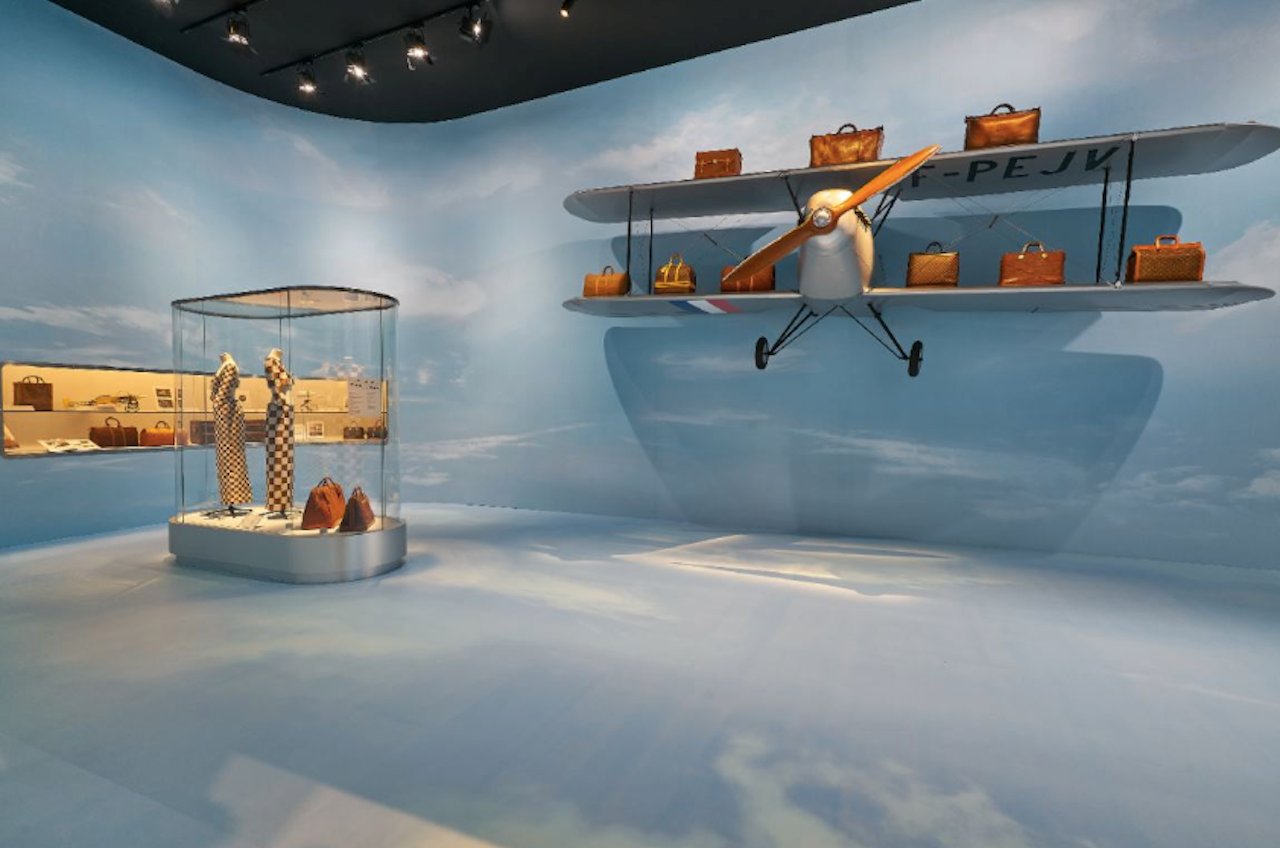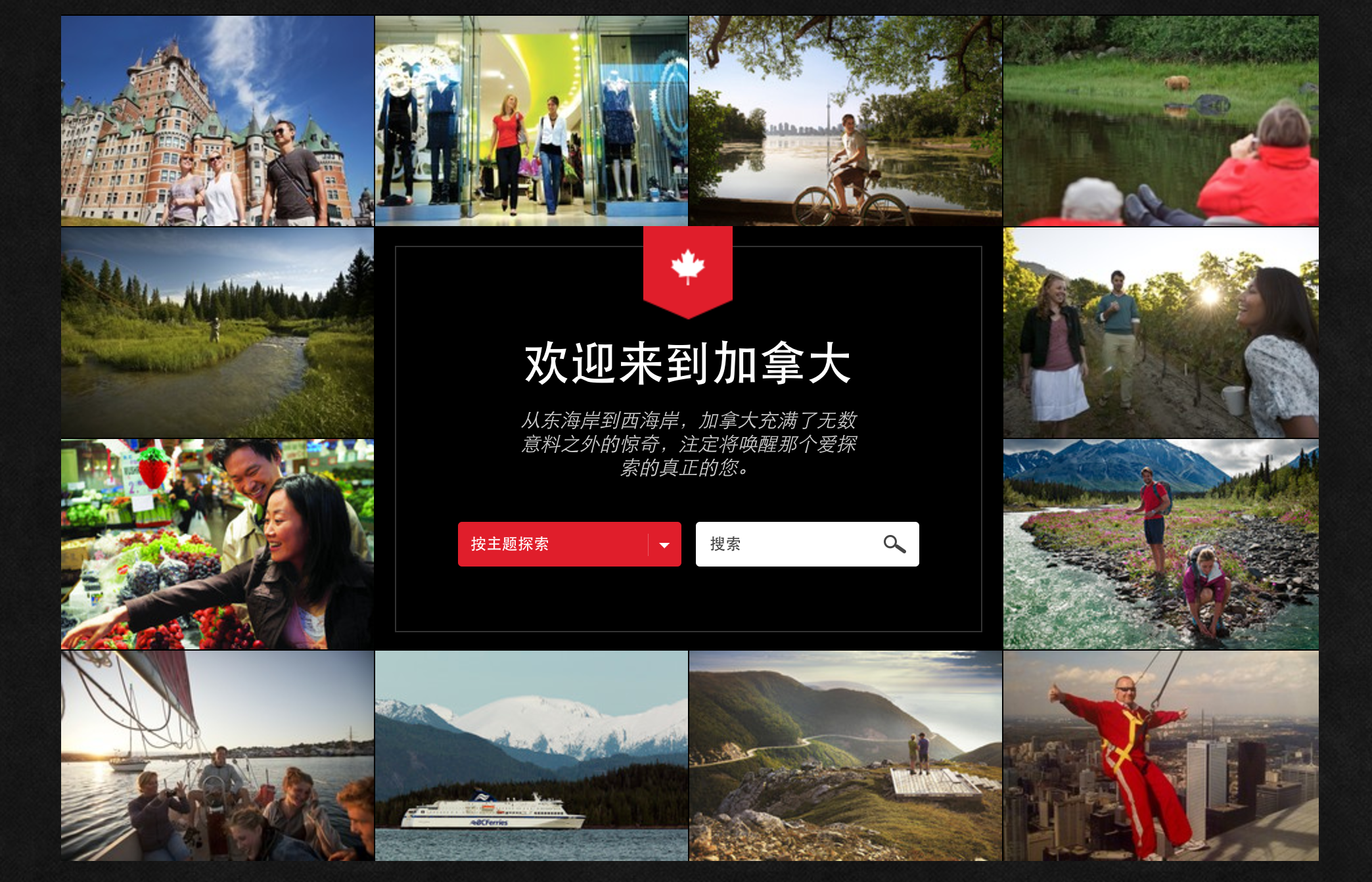The global consultancy Bain & Co. recently predicted that purchases in China will generate nearly half of all the luxury industry’s sales by 2025. So for international luxury brands, the question is not only how, but where, they should try and win Chinese consumers.
For French fashion house Louis Vuitton, the lavish answer right now is a museum-quality exhibition in Shanghai. LV’s lush “The Art of Travel” (on display through February 1st) opened at the Shanghai Exhibition Center Nov. 16, after packed showings in Paris, Tokyo, Seoul, and New York City. It’s larger in scale and scope than any fashion-house exhibition China has previously seen. And so is its elaborate luxury-and-travel marketing campaign featuring partnerships with CTrip, WeChat, Mobike and Chinese contemporary artists.
This Vuitton exhibition is about far more than pretty things, it’s savvy business strategy: Because of the falling yuan, fewer Chinese luxury shoppers are purchasing goods overseas. Meanwhile, the government is actively looking to boost domestic spending, so more Chinese shoppers are spending money on luxury products inside the country. In that environment, branding and domestic displays of consumer goods like the LVMH extravaganza have become even more crucial—something we've already seen in the form of luxurious museum exhibitions staged or backed by brands like Gucci and Prada in China.
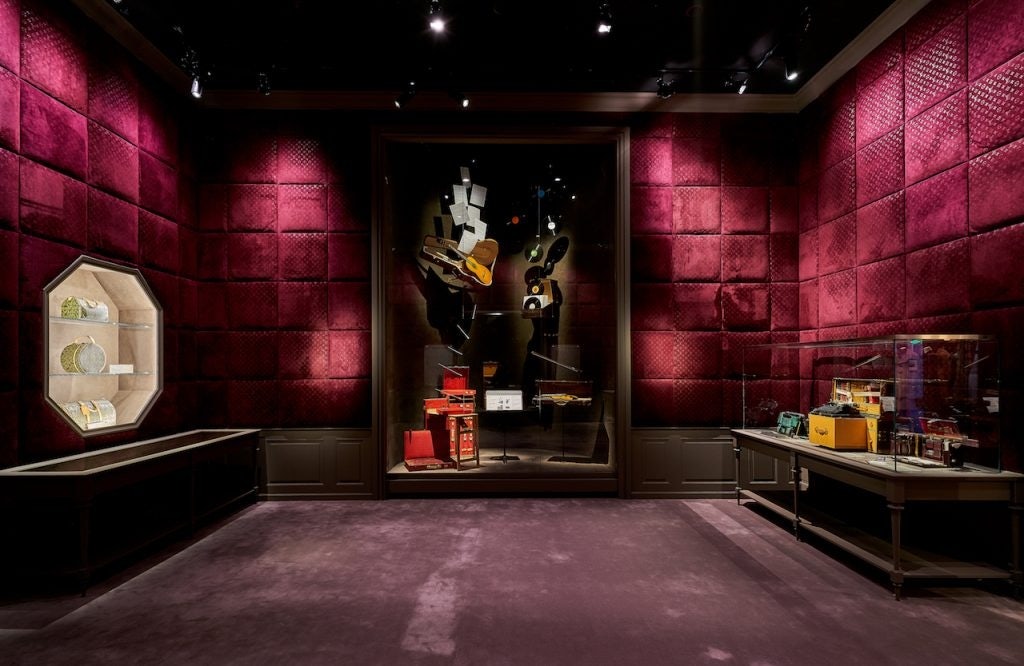
In Shanghai, Louis Vuitton has crafted its ambitious show with 15 different chapters that seek to illustrate how historically important, universally desirable and versatile Louis Vuitton bags may be. The exhibition features more than 1,600 objects from the Louis Vuitton archives and presents the products in various theme displays, from the evolution of transportation (boat, car, train and air travel) to a range of different personal perspectives (writer, musician, designer, or celebrity). VIPS’s got early invites and, so far, reaction to the show on social media has been quite positive.
"I think people will come away really surprised at the richness of the heritage of Louis Vuitton and understand why the marque continues to develop in the way that it does," Robert Carsen, the exhibition's artistic director, and set designer said.
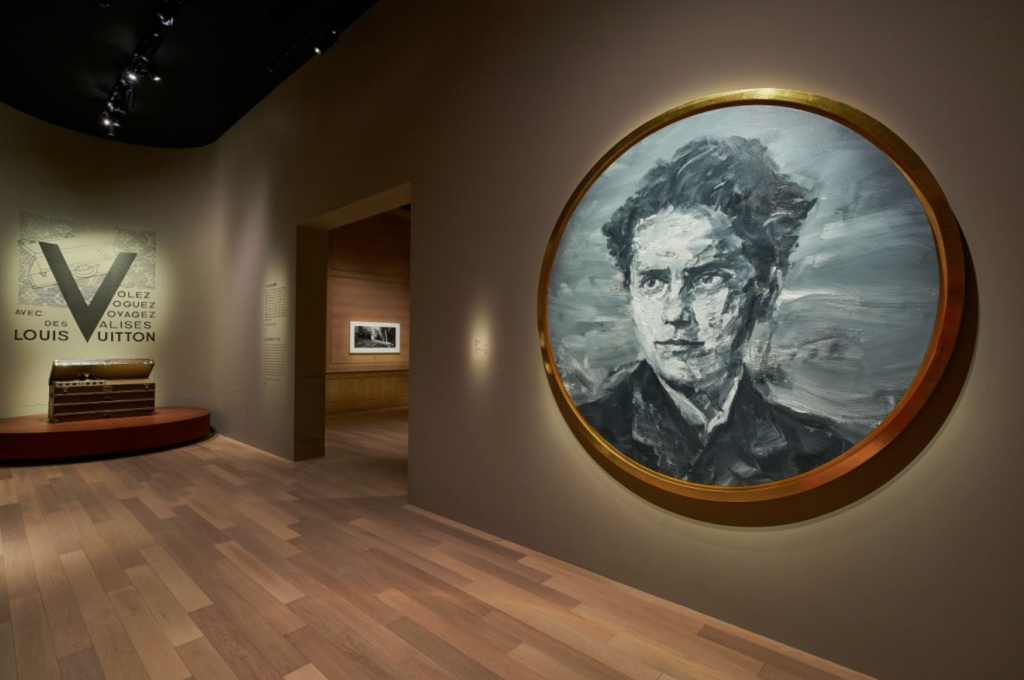
China is no doubt one of the most important markets in Asia for LVMH, as the Asia region accounted for 30% of their sales from the first half of 2018. But the climate has changed.
This July, for instance, the government made cuts on import duties, so Louis Vuitton lowered its prices in China to help compete with lower overseas prices. To further engage with domestic consumers, the brand recently appointed 27-year-old Chinese rapper and celebrity Kris Wu as their global ambassador (he also appeared in a dreamy campaign created by advertising agency Fred & Farid to build hype for the exhibition).
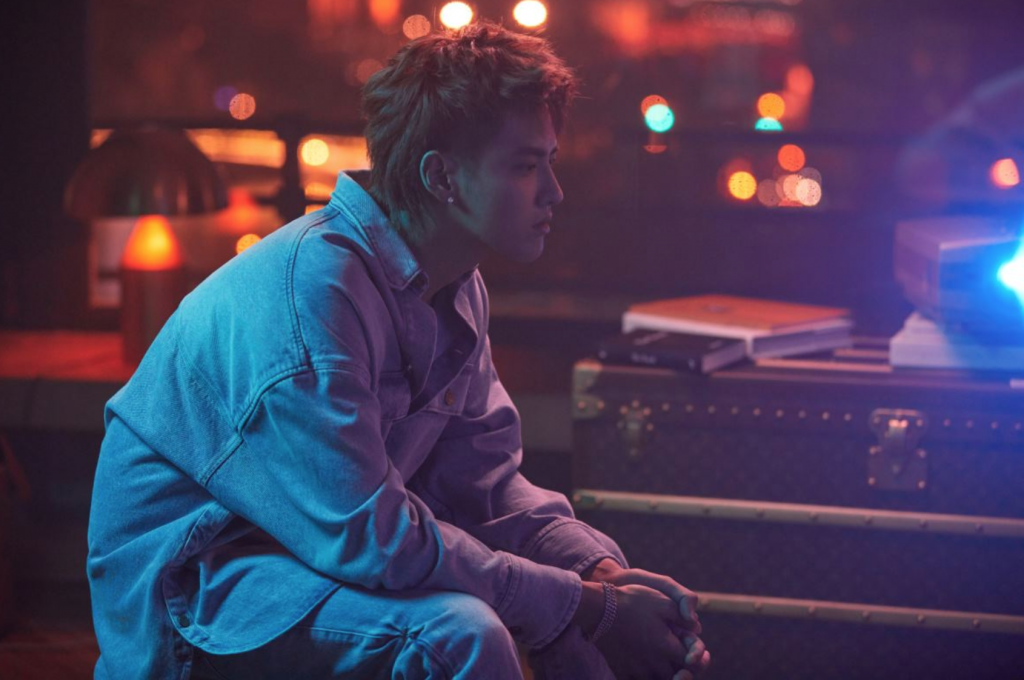
The theme of the Vuitton exhibit is Volez, Voguez, Voyagez (French for “Fly, Sail, Travel”), which is a clever way of creating a sense of exoticism and luxury travel for potential consumers who may be “stuck” shopping in China. It's also an attempt at elevating brand awareness and prestige in the minds of consumers through stories about the company's rich history—via a destination art exhibit.
Here are three strategic highlights:
An Immersion in Chinese Culture and History#
The show highlights the evolutions of Vuitton trunk designs throughout history but also includes original Chinese artworks and, of course, lots of gorgeously crafted Louis Vuitton clothing and accessories and an emotional appeal to heritage.
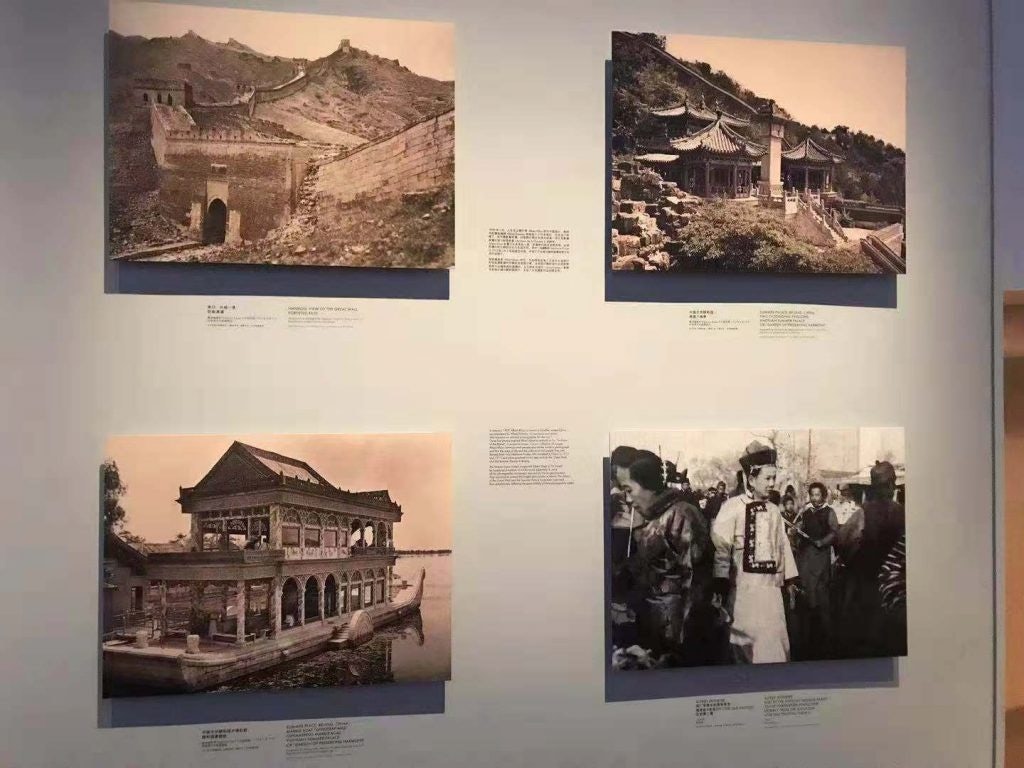
Many of the artworks commissioned for the Shanghai exhibition are by Chinese artists. Painter Yan Peiming made the portrait of the founder of the brand Louis Vuitton, and contemporary trunks were designed in collaboration with local artists Ding Yi and Xu Bing. Louis Vuitton also created Chinese narratives with different characters throughout history for visitors to enjoy. For example, the “Expeditions” exhibit featured photographs taken by a 1909’s Vuitton-lover, banker Albert Kahn, traveling to China with his LV trunks and photographing the Manchu imperial family.
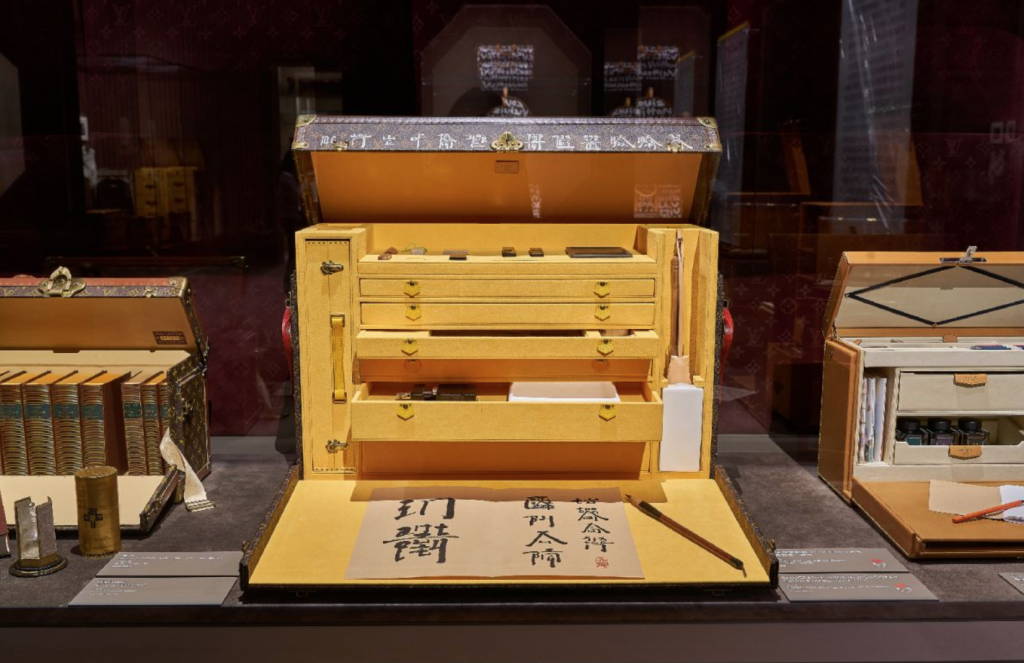
There’s also a section dedicated to celebrities who’ve worn Louis Vuitton on the red carpet, many of whom are familiar faces in China. Throughout the exhibit, visitors can track the chronological China-related histories by following a small red Chinese flag.
Market an Exhibit as a Travel Destination#
By creating strategies that partner the luxury brand with the three internet companies that currently dominate the travel industry in China (Mobike, Ctrip, and Dianping), Louis Vuitton has successfully marketed their exhibition as a hot travel destination in Shanghai.
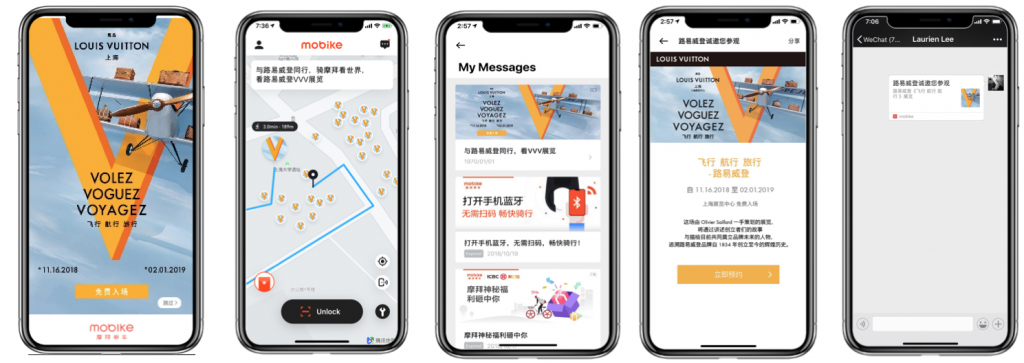
Their plan starts the minute visitors walk out of their front door—with the type of transportation they’ll take to get to the event. From November 15, when users in Shanghai opened their Mobike app, they’ll receive an invitation to the VVV (Volez, Voguez, Voyagez) exhibit. The virtual map will automatically turn into a VVV-themed one, and users can book a ticket right away if they decide to drop by for a visit. This visually engaging collaboration with the shared biking company Mobike helped put the exhibit onto people’s radar who are traveling locally.
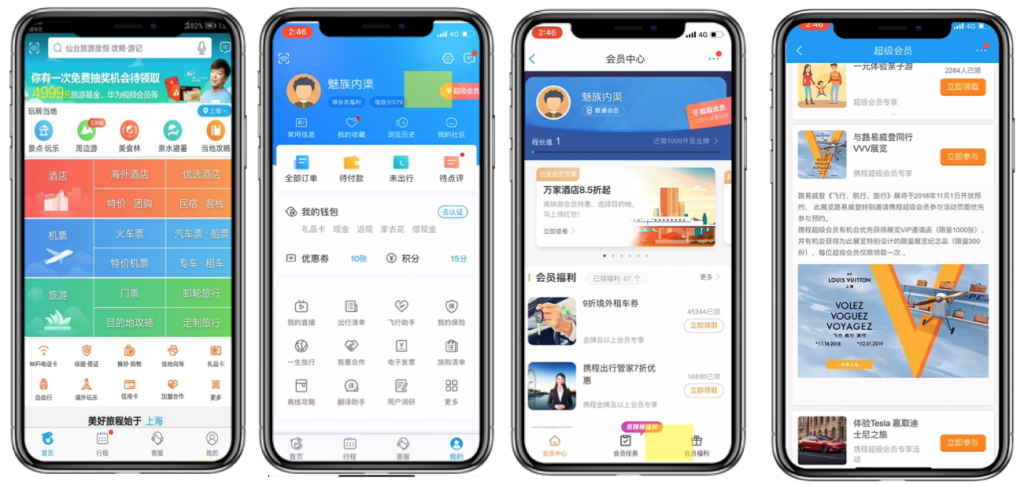
To attract the type of demographic that would be a potential Louis Vuitton buyer, the company sent VIP exhibit passes to the VIP members of the online booking app Ctrip weeks ahead of the event. While the event started on the 16th, the introduction page is always refreshed with new exhibit highlights, photos, and videos. Visitors can also check-in and upload their own comments and photos.
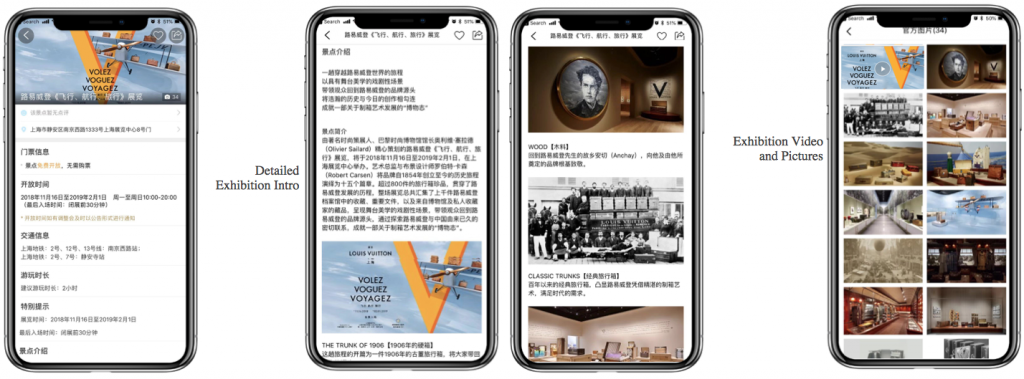
Similarly, users on the online review forum Dianping (China’s answer to Yelp) can access a ‘24 hours in Shanghai’ guide. Aside from the exhibit, they can read about a selection of go-to local restaurants, cafés, and boutiques that are curated by the French luxury house. On Dianping, the responses from visitors have been overwhelmingly positive so far, and many on the site have shared tips on the best parts of the exhibition to take photos at.
Enrich The Exhibit With A WeChat Mini-Program#
While a mini-program has become a standard service for most luxury brands’ offline events, Louis Vuitton’s VVV packed a lot of information and function into their mini-program, which is more like a stand-alone app or virtual personal tour assistant.
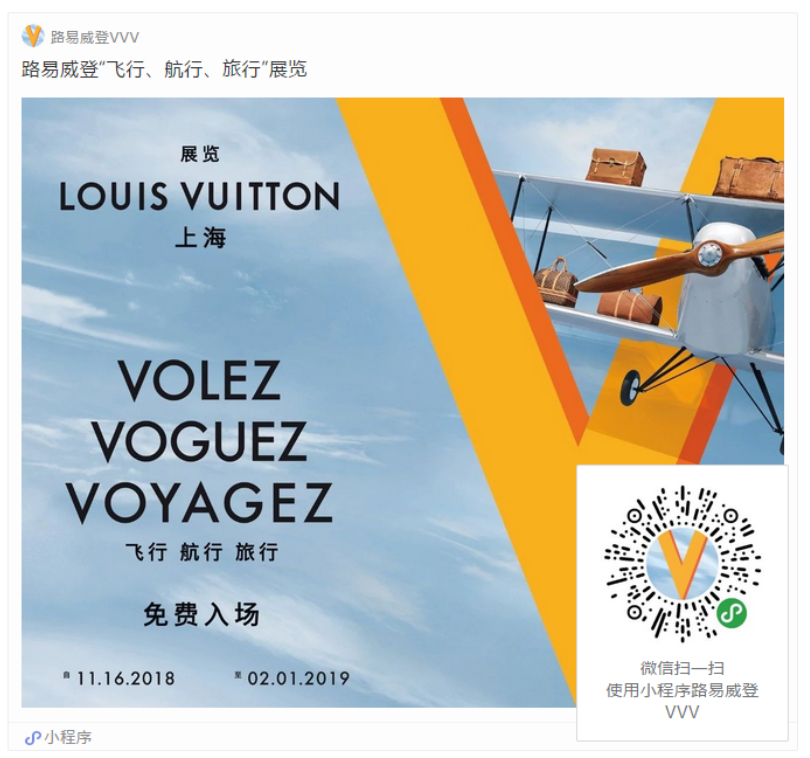
For example, it has all the functions that museums use mini-programs for—like an audio guide and a visual map—but it also has a lot of new features that allow consumers to personally interact with the exhibit. At their “trunk in the sand” display, visitors look for a LV trunk in the desert by playing a virtual game. They can also use the “shake” function on WeChat to view customized trunk designs at the “trains” exhibit or take selfies with a VVV-designed logo.
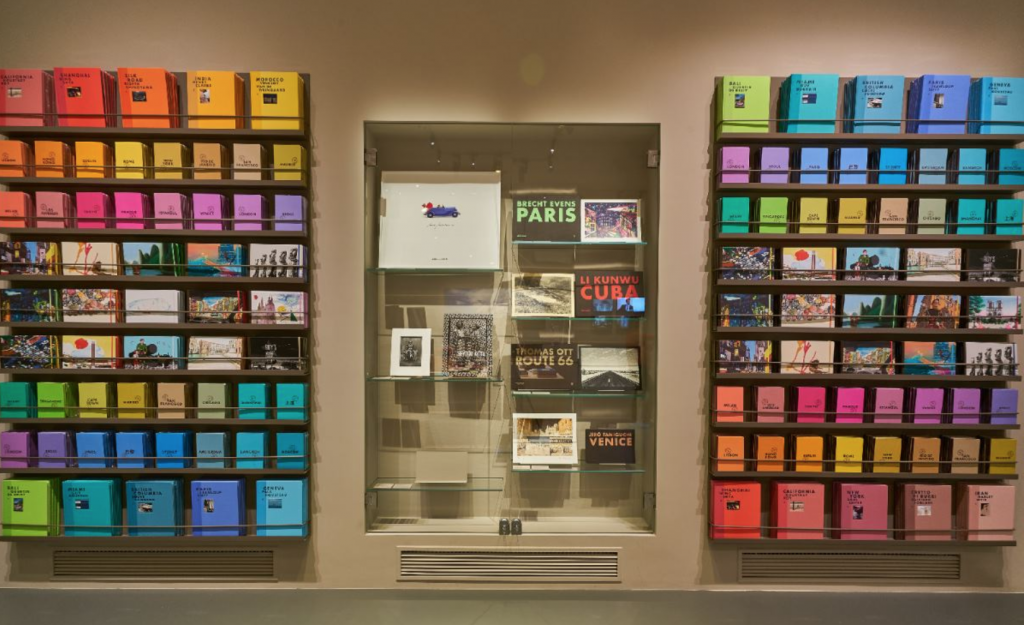
By accessing the mini-program, users don’t have to download an app, and they can “travel” through the exhibit quickly and effortlessly. And after their visits, they can continue to listen to the audio guide or share their content on social media.
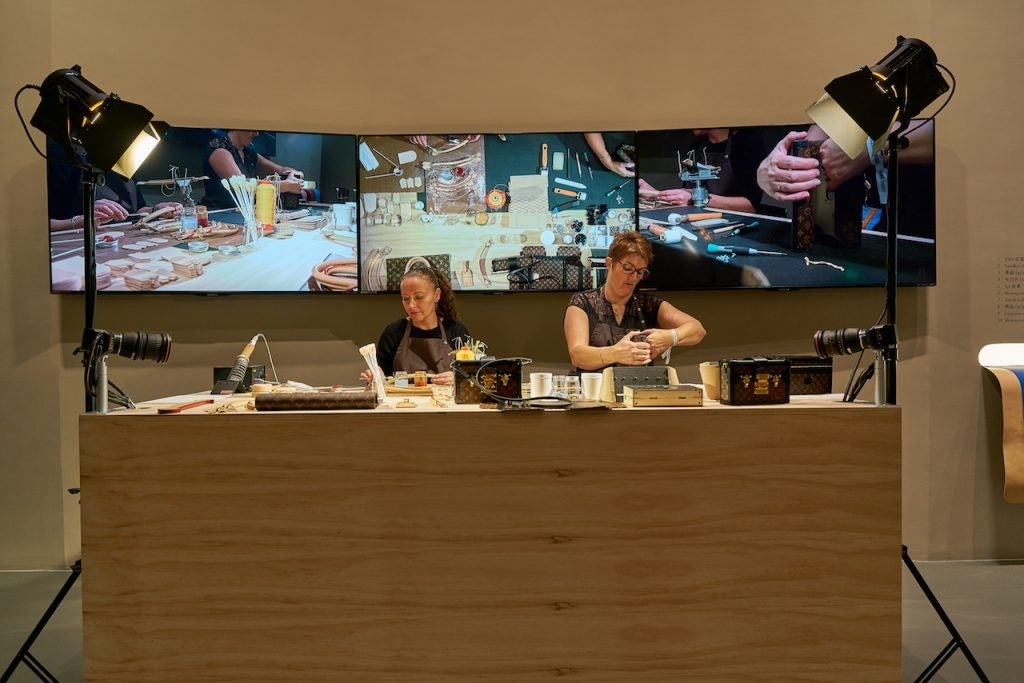
At the end of their tour, visitors can see a Louis Vuitton workshop (where the magic happens) where craftsmen carefully explain the types of leather and lining used in some Vuitton products. If they want to indulge their fantasy of traveling with Louis Vuitton, there are also travel guidebooks available to buy, but not Vuitton merchandise.
Even though they leave the museum without their own luxury bags, Louis Vuitton is betting that consumers will take a hard look at their bags later when they see them in stores.
